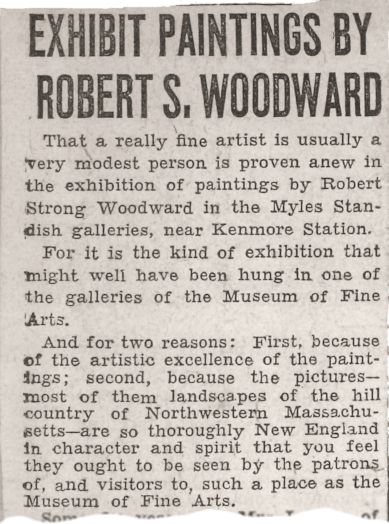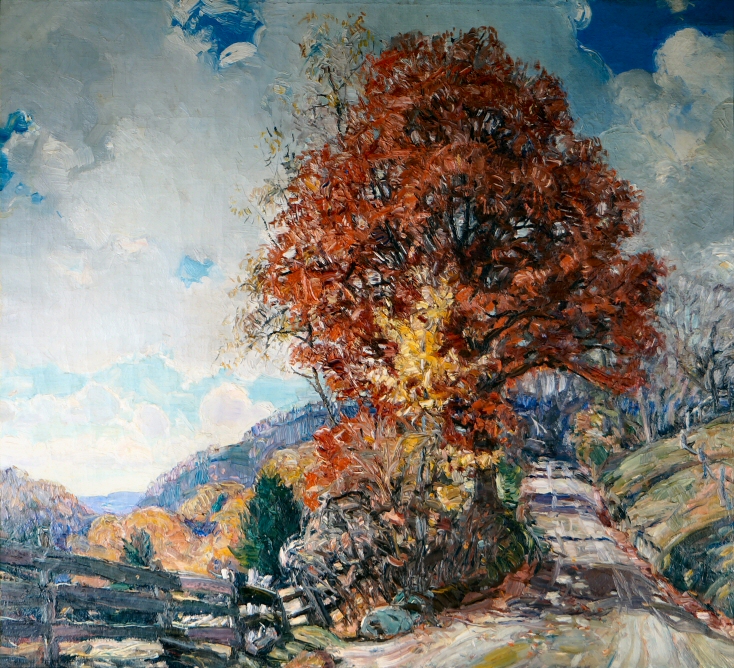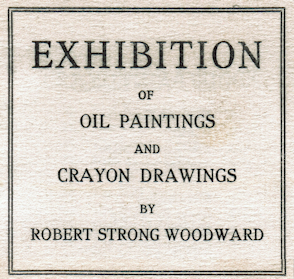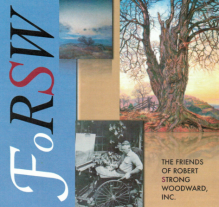Quick Reference
c. 1926
Unknown
Oil on Canvas
Landscape
Autumn, Woods
24" x 32"
Mrs. Henry Everett
N/A
Featured Artwork: October (1926 - 29)
RSW's Diary Comments
Editor's Notes:
From a description in a 1929 newspaper article. We have determined. that this is
its own painting and does not match the other two paintings by the same name. We list two years
associated with this artwork because of the two exhibitions it is listed to have hung, although
it does not appear on the 1926 Lyman exhibit card list, we have in Woodward's own handwriting on
another card where he adds this and two other paintings missing.
As we pointed out previously,
we are certain the 1926 painting is not the 1919 painting (to the right) because that
artwork was bought by Mrs. Everett in Pasadena,
CA, and she likely bought it after it exhibited in 1922 at the J.H. Miller Gallery. Moreover, many of
the "early style" paintings made in 1924, 25, and 26, did not sell at Lyman. Though a success, he
sold two-thirds of the 26 canvases (17) with nine paintings exhibiting again a number of times
thereafter. For the description of the 1926-29 painting is offered below ⮟
Additional Notes

 Boston Globe, May, 1929 by A. J. Philpott
Boston Globe, May, 1929 by A. J. Philpott
Boston Globe, May, 1929 by A. J. Philpott
"......October is a powerful bit of painting---rich in color
contrast and typically New England in an almost undefinable way...."
"How effectively he has placed that red tree in the picture entitled
October."
⮝ Our remarks on Philpott's description is that it is only helpful in the sense that he is NOT describing the 1919 "October." There are no red trees on that canvas. Where it does not help is that he fails say where the red tree is placed. Our first though was a 1926 painting seen below⮟
We selected three known paintings that feature "red" trees. It is unlikely this painting would be similar to Autumn Brilliance, since both hung at Lyman. Below are two more options and the only chance to be similar is the 1923 October Pageant. Beyond that, the options are slim, to see for yourself, visit the Burning Autumn Gallery



.png)

734.png?url=photos/october1919(10)734.png)


